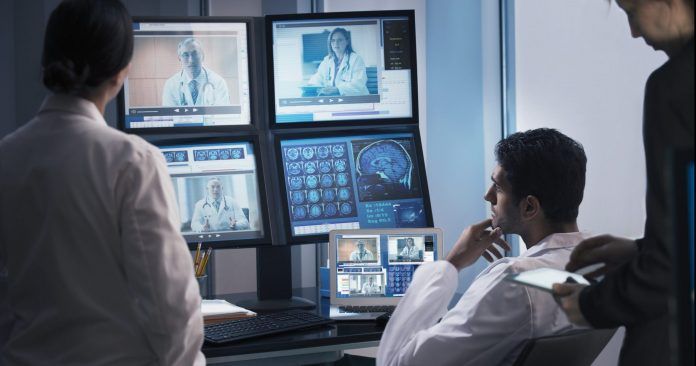

Why Healthcare Needs New Data and Analytics Solutions Before the Next Pandemic
source link: https://www.tibco.com/blog/2021/02/26/why-healthcare-needs-new-data-and-analytics-solutions-before-the-next-pandemic/
Go to the source link to view the article. You can view the picture content, updated content and better typesetting reading experience. If the link is broken, please click the button below to view the snapshot at that time.
Why Healthcare Needs New Data and Analytics Solutions Before the Next Pandemic

Despite an increase in healthcare funds, hospitals are still unprepared for major global crises. To improve patient care and better weather the next pandemic, healthcare providers can invest in better data and analytics.
Healthcare Data, An Untapped Opportunity
According to the World Economic Forum, hospitals on average produce 50 petabytes of data per year, which equates to 50 million gigabytes or the space of 50 million CDs. That’s a lot of data. Yet hospitals waste about 97 percent of this data when they could transform it to drive better healthcare outcomes.
How can healthcare providers unlock this data through predictive models and unified data platforms so they can improve patient care and save more lives?
What are some of these data-related opportunities?
- With patient data spanning numerous diagnostic and care systems, greater data alignment and sharing can provide the complete picture of the patient that doctors require. This can accelerate diagnosis and treatment, and yield healthier outcomes
- With better access and insights from their data, providers can better personalize patient care, saving everyone time and money.
- And to stay ahead of outbreaks, healthcare analysts can leverage data and analytics to predict and prepare for future healthcare situations.
Intercepting Medical Emergencies Before They Happen
One example of data at work is the University of Chicago Medicine’s (UCM) predictive models. UCM implemented an eCART solution that uses streaming analytics and a predictive algorithm to predict when a cardiac arrest is most likely to occur. Before a patient goes into cardiac arrest, a doctor is notified and can administer care to avoid a serious complication. UCM has been able to reduce the number of cardiac arrests in the hospital by an estimated 15 to 20 percent. UCM also uses TIBCO solutions to streamline its data for better data management between healthcare and insurance providers.
Predictive Healthcare Analytics Saves Lives
Post-surgical infections cause rehospitalization, often leading to increased healthcare costs, complications, and patient death. The University of Iowa Hospital and Clinics, using accessible analytics, reduced surgical infections by 74 percent. Combining patient care and historical data, the hospital developed a predictive model in a real-time environment, enabling faster and accurate decision-making, reducing costs by $2.2 million.
Predictive analytical models like the ones featured above are critical during a mass pandemic. Due to COVID, many clusters of the population are going through monthly testing, which is time-sensitive and costly. The estimated annual cost of COVID-19 diagnostic tests was at least $6 billion, and in the case of a mass testing scenario, the costs jumped to $25 billion. By predicting the rates and likelihood of infection, hospitals can better prepare testing sites where they are needed, reducing the number of unneeded tests and the associated costs.
Currently, COVID testing is not always efficient or accurate enough for optimal diagnosis and care. According to a recent survey by the Annals of Internal Medicine, on the day of symptom onset, the median false-negative rate was 38 percent. It decreased to 20 percent on the third day and then rose to 66 percent in the following days. False-negatives result in sick individuals infecting more of the population. More data and better analytical models can help improve testing efficacy before the next health crisis.
Transforming Data Ahead of Future Global Crises
Serving seemingly endless demand for high-quality care will always be top of the list for healthcare providers. Investments in more unified patient data and more intelligent analytics can significantly improve patient care, every day and in times of crisis.
By predicting the rates and likelihood of infection, hospitals can better prepare testing sites where they are needed, reducing the number of unneeded tests and the associated costs. Click To Tweet
To learn more about TIBCO’s role in making greater data-driven insight a reality for healthcare providers, check out this recent webinar. And to learn more about data’s role in patient care, stay tuned for an upcoming blog from Dennis MacLaughlin.
Recommend
About Joyk
Aggregate valuable and interesting links.
Joyk means Joy of geeK